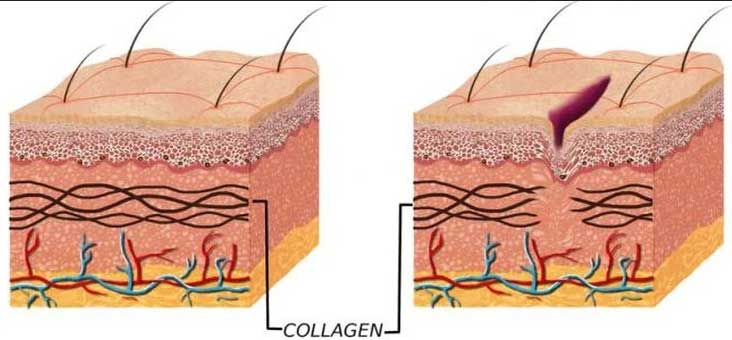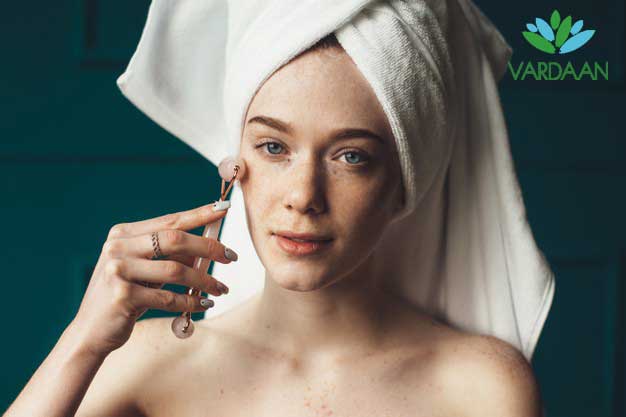Before getting into the medical details on stretch marks, let’s first lay our eyes on how they affect us emotionally. For most men and women, the appearance of stretch marks begin when they either loose or gain weight suddenly (e.g. at the time of puberty). People don’t find them flattering and usually try to cover them up using different ways. As most of us associate them with weight gain, their appearance often become a source of dread to us. It hampers our emotional stability since we consider ourselves ‘Fat’ and for most people, the words ‘fat’ and ‘mental peace’ don’t go hand in hand. Hence, we spend a lot of time and energy in finding and trying out ways to get rid of them.
As dangerous they may seem, stretch marks are nothing but beauty marks. They are a sign of your struggle and honestly they are nothing that you should be ashamed of. And let’s face it- Everyone has them.
“Stretch marks look pretty on other people”, someone must have said that about you too…
The Science behind stretch marks
What are stretch marks?
In medical terms, stretch marks are called stria or striae. Usually, they are elongated marks which form when our skin expands or shrinks quickly. In their initial stages of formation, they appear in a red or purple colour and gradually, they fade into a silvery-white colour. Their appearance is usually of two types, Horizontal stretch marks (which are a result of gaining height) and vertical stretch marks (which are a result of gaining weight).
So what exactly is the mechanism behind their formation? The abrupt changes in our body causes the rupture of collagen and elastin fibreswhich are in the skin. These fibres are responsible for maintaining the firmness and elasticity of our skin. When these are broken down, they result in the formation of stretch marks.
When do stretch marks appear?
Stretch marks may appear-
- During pregnancy: They appear during the later stages of pregnancy as the skin stretches. They usually appear on the thighs, abdomen and breasts.
- During puberty (due to rapid growth): During puberty, the body shows rapid changes involving growth resulting in the development of stretch marks.
- Due to rapid weight loss or gain: Gaining or losing weight in a short period of time welcomes the appearance of stretch marks. In order to avoid them, it is advised to loose or gain weight slowly and steadily.
- Due to rapid muscle growth during weight training in gymnasiums: Weight straining involves increases of muscle size. As a result, bodybuilders and athletes often develop stretch marks.
Treatment of stretch marks
Admit it, we have all been there- googling homemade treatments for stretch marks, buying commercial creams to reduce their appearance. But with great accessibility to all such information, comes great confusion. The body type of different individuals and their concerns are different, so why shouldn’t the treatment be unique too?
To begin with, stretch marks that turn white or pale are difficult to cure than the ones which are pink or red. So, usually at-home treatments are meant to cure stretch marks which are in their early stage. However, they may be a little helpful in curing the appearance of white marks too, but the process takes a lot of time and consistency on your end.
- Exfoliating: Regular exfoliation using a moisturizing scrub can improve the appearance of stretch marks. You can even create your own scrub at home using coffee, coconut oil and honey or sugar, coconut oil/ almond oil.
- Aloe Vera: Using natural aloe vera and lathering it on the affected areas twice a day can sooth your skin and heal it eventually.
- Coconut oil: Massage the affected area using coconut oil.
There are various procedures which can help to improve the stretch marks.
- Laser therapy
- Microneedling or dermaroller
- Microneedling Radiofrequency
Non-surgical treatments such as micro-needling, micro-needling radiofrequency and lasers are far more effective in getting rid of stretch marks than lotions and creams.
As stretch marks are caused by damaged collagen, these types of procedures help in the rebuilding of collagen or induction of new collagen fibres. These help in the remodelling of the scar and reduction of stretch marks with multiple sessions. These procedures may be combined with PRP – platelet rich plasma, which is a concentrate of platelets containing growth factors and proteins which help in improving the collagen remodelling.
Once the stretch marks have been removed or made quite better, they typically do not come back. However, if the conditions that originally caused the stretch marks in the first place come back, the creation of new stretch marks is possible. Similarly, if the patient is planning for another pregnancy, the procedures should be done after the pregnancy as this can cause new stretch marks to appear.




